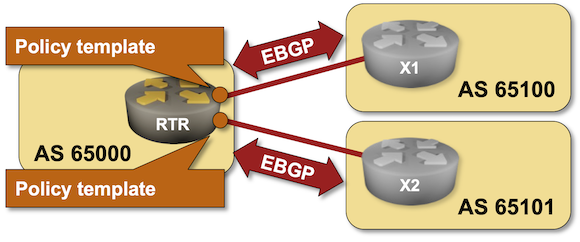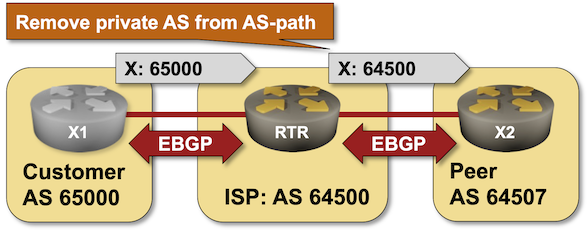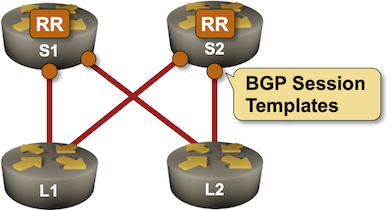Rant: Multi-Vendor EVPN Fabrics
Daniel Dib tweeted about an old comment of mine a few days ago, adding1:

Not surprisingly, that was bound to upset a few people, and Roman Dodin quickly pointed out the EVPN interoperability tests:
netlab 1.8.0: Control-Plane Daemons, BIRD, dnsmasq
I wanted to include open-source networking-related software into netlab topologies since (at least) the days I was writing the DHCP relaying saga. It turned out to be a bit more complex than I anticipated (more about that in another blog post), but I hope you’ll find it useful. netlab release 1.8.0 includes dnsmasq running as a DHCP server and BIRD running OSPF and BGP. ExaBGP and GoBGP are already on the wish list; if you have any other ideas, please start a GitHub discussion.
I had a hard time finding reasonable container images for BIRD; the BIRD team does not publish them, and everything else I found looked either abandoned or a hobby project. The solution turned out to be exceedingly simple: you cannot run the containers without Docker anyway, which means the docker build command is just a few keystrokes away. I added Dockerfiles needed to build those containers to the netlab source code and implemented the netlab clab build command as a thin wrapper around docker build. It takes just a few seconds (plus the time it takes to download the Ubuntu container image) to build the containers you need.
Worth Reading: Unbloating the Buffers
In case you’ve heard about bufferbloat but don’t know what it is: Dan Groshev wrote a nice bufferbloat for dummies blog post on the APNIC blog.
netlab on Packet Pushers
A few weeks ago, Ethan Banks invited me to chat about netlab, and we had great fun discussing its intricacies for almost an hour. I also managed to win the Buzzword Bingo describing netlab as
Intent-based infrastructure-as-code digital twins lifecycle management system
The podcast was published a few days ago; listen to it on the PacketPushers website or YouTube.
BGP Labs: Policy Templates
One of the previous BGP labs explained how you can use session templates to configure common TCP or BGP session parameters. Some BGP implementations have another templating mechanism: policy templates that you can use to apply consistent routing policy parameters to an EBGP neighbor. You can practice them in the next BGP lab exercise.

… updated on Saturday, March 2, 2024 20:33 +0100
DHCP Relaying on a Linux Host
Markku Leiniö sent me an interesting observation after writing a series of DHCP-relaying-related blog posts:
I was first using VyOS, but it uses the ISC DHCP relay, and that software relays unicast packets. The DHCP procedures eventually worked fine, but getting sensible outputs and explanations was a nightmare.
I quickly reproduced the behavior, but it took me almost half a year to turn it into a blog post. Engaging in a round of yak shaving (I wanted to implement DHCP in netlab first) didn’t exactly help, either.
… updated on Sunday, June 30, 2024 10:43 UTC
VXLAN Virtual Labs Have Never Been Easier
I stumbled upon an “I want to dive deep into VXLAN and plan to build a virtual lab” discussion on LinkedIn1. Of course, I suggested using netlab. After all, you have to build an IP core and VLAN access networks and connect a few clients to those access networks before you can start playing with VXLAN, and those things tend to be excruciatingly dull.
Now imagine you decide to use netlab. Out of the box, you get topology management, lab orchestration, IPAM, routing protocol design (OSPF, BGP, and IS-IS), and device configurations, including IP routing and VLANs.
Ansible Set Operations Do Not Preserve List Order
Here’s another Ansible quirk, this time caused by Python set behavior.
When I created the initial device configuration deployment playbook in netlab, I wanted to:
- Be able to specify a list of modules to provision.1
- Provision just the modules used in the topology and specified in the list of modules.
This allows you to use netlab initial to deploy all configuration modules used in a lab topology or netlab initial -m ospf to deploy just OSPF while surviving netlab initial -m foo (which would do nothing).
Worth Reading: Popular git config options
Another must-explore gem by Julia Evans: Popular git config options.
Side note: I keep collecting links to insightful Git articles in the Git and GitHub section of the Network Automation Tools webinar.
BGP Labs: Remove Private AS from AS-Path
In a previous BGP lab exercise, I described how an Internet Service Provider could run BGP with a customer without the customer having a public BGP AS number. The only drawback of that approach: the private BGP AS number gets into the AS path, and everyone else on the Internet starts giving you dirty looks (or drops your prefixes).

Let’s fix that. Most BGP implementations have some remove private AS functionality that scrubs AS paths during outgoing update processing. You can practice it in the Remove Private BGP AS Numbers from the AS Path lab exercise.
Implementing 'Undo' Functionality in Network Automation
Kurt Wauters sent me an interesting challenge: how do we do rollbacks based on customer requests? Here’s a typical scenario:
You might have deployed a change that works perfectly fine from a network perspective but broke a customer application (for example, due to undocumented usage), so you must be able to return to the previous state even if everything works. Everybody says you need to “roll forward” (improve your change so it works), but you don’t always have that luxury and might need to take a step back. So, change tracking is essential.
He’s right: the undo functionality we take for granted in consumer software (for example, Microsoft Word) has totally spoiled us.
Applying BGP Policy Templates
I got this question after publishing the BGP Session Templates lab exercise:
Would you apply BGP route maps with a peer/policy template or directly to a BGP neighbor? Of course, it depends; however, I believe in using a template for neighbors with the same general parameters and being more specific per neighbor when it comes to route manipulation.
As my reader already pointed out, the correct answer is It Depends, now let’s dig into the details ;)
Network Layer: Interface or Node Addresses
The fun question about network layer addresses is: are we addressing nodes or individual node interfaces? On the data link layer, we never had this issue because it was obvious that a data link layer endpoint is an interface, so each interface should have a unique data link layer address.
Interestingly, that’s not the case on transparent bridges. Even though they have multiple interfaces, the whole bridge has a single MAC address, so one could claim we’re addressing nodes connected to a single data link layer. The IEEE standard is unambiguous: in every relevant diagram, the MAC address sits on top of multiple interfaces because the MAC address belongs to the control plane.
BGP Labs: Session Templates
Configuring an IBGP session on a route reflector takes a half-dozen parameters, starting with the remote BGP AS number (equal to the local one), remote IP address, and the source IP address or interface. You might have to specify the propagation of BGP communities and an MD5 password, and you will definitely have to specify that the BGP neighbor is a route reflector client.
Wouldn’t it be nice if you could group those parameters into a template and apply the template to a neighbor? Most BGP implementations have something along those lines. That feature could be called a session template or a peer group, and you can practice it in the next BGP lab exercise.

Can We Skip the Network Layer?
I mentioned that you don’t need node addresses when dealing with only two entities. Now and then, someone tries to extend this concept and suggests that the network layer addressing isn’t needed if the solution is local. For instance, if we have a solution that is supposed to run only on a single Ethernet segment, we don’t need network layer addressing because we already have data link layer addresses required for Ethernet to work (see also: ATAoE).
Too often in the past, an overly ingenious engineer or programmer got the idea to simplify everyone’s life and use the data link layer addresses as the ultimate addresses of individual nodes. They would then put the transport layer on top of that to get reliable packet transport. Finally, put whatever application on top of the transport layer. Problem solved.
